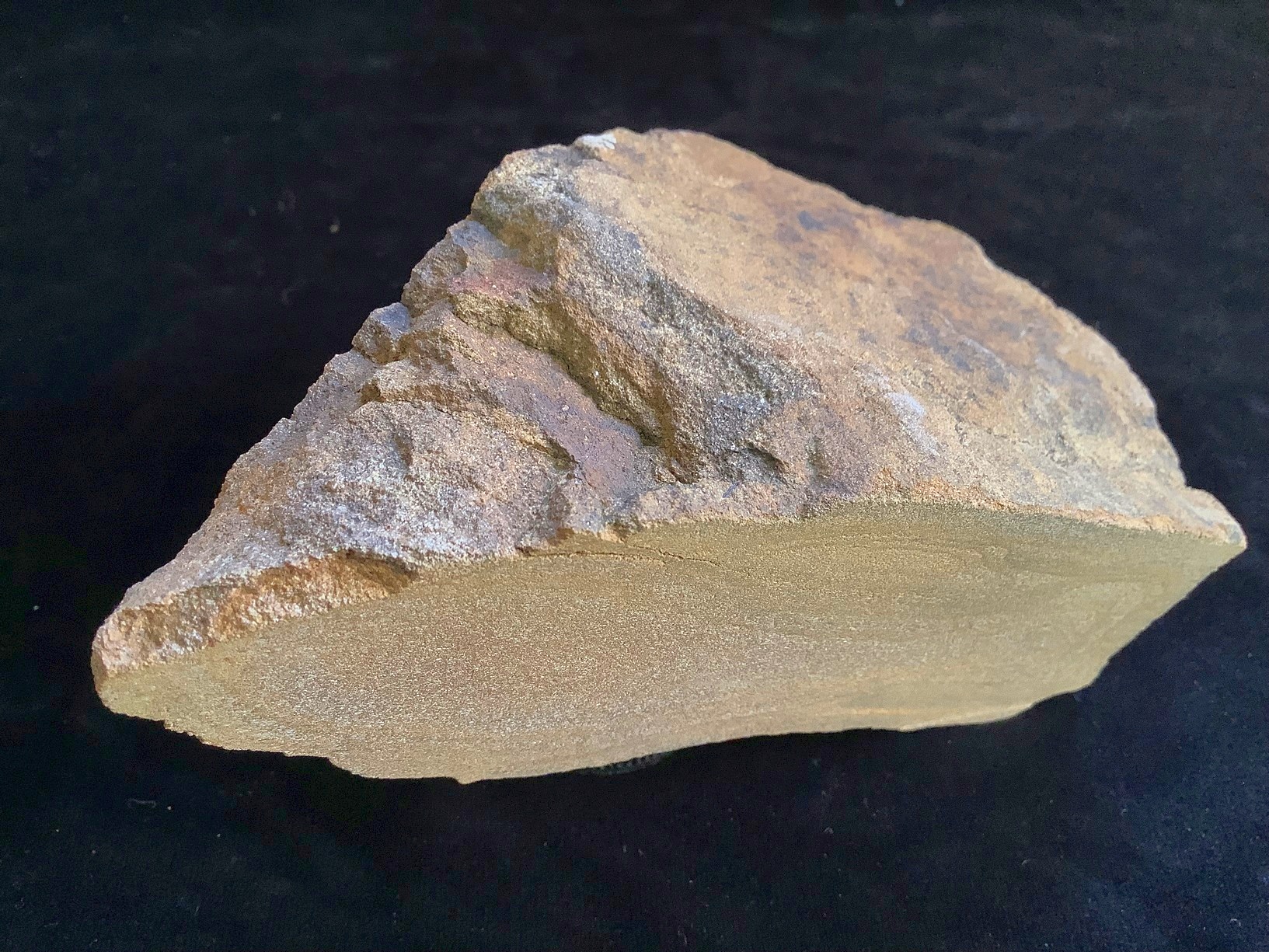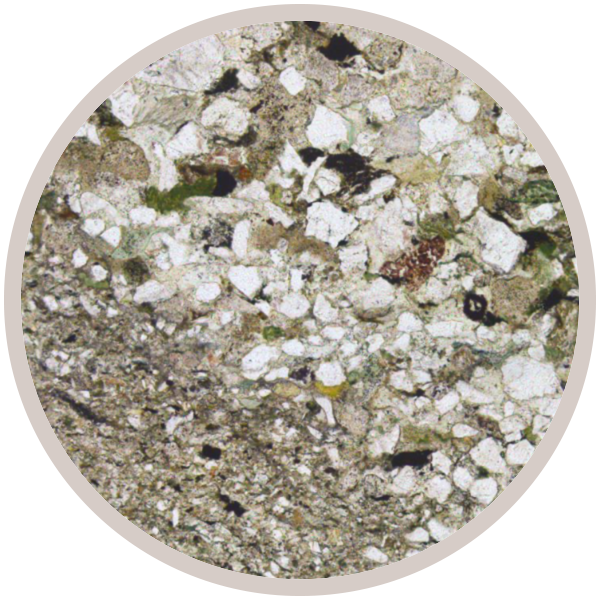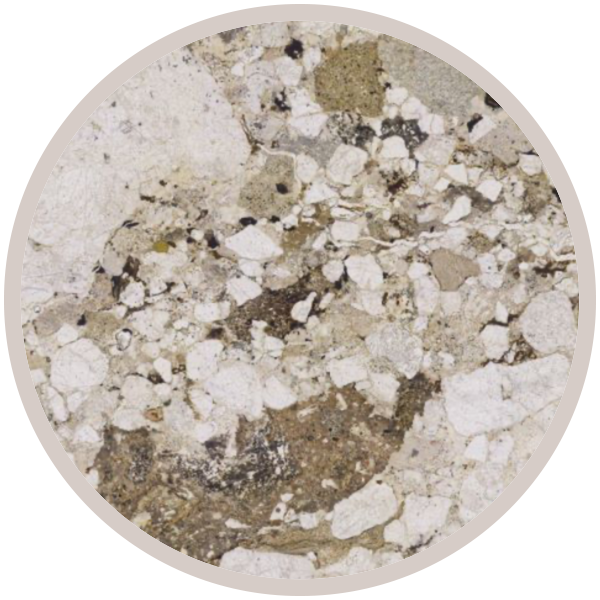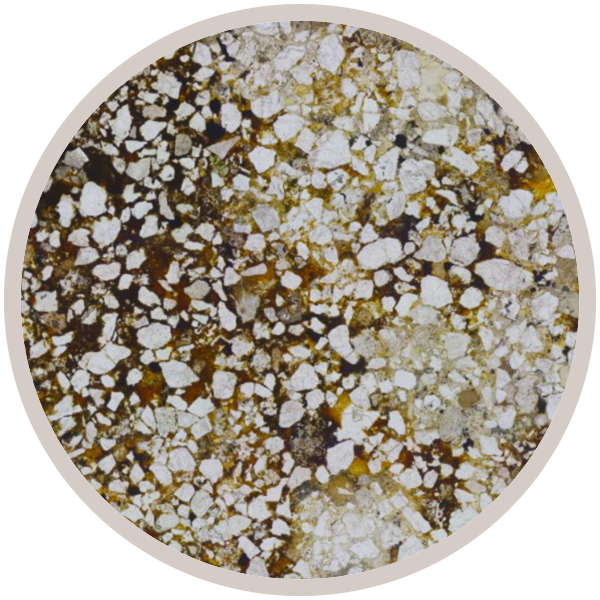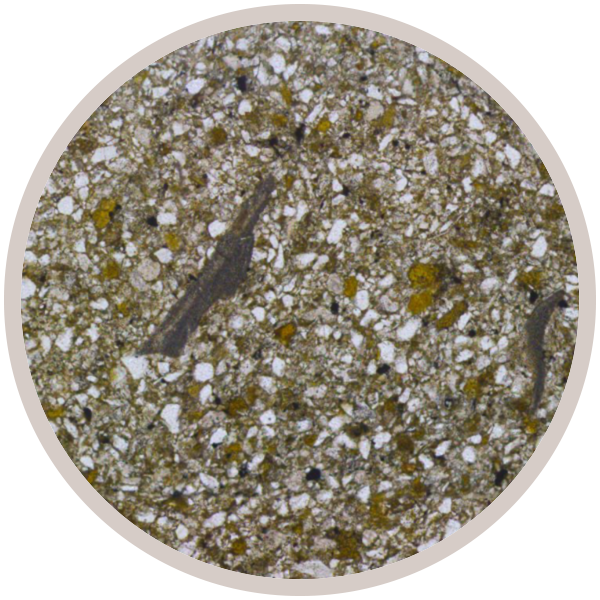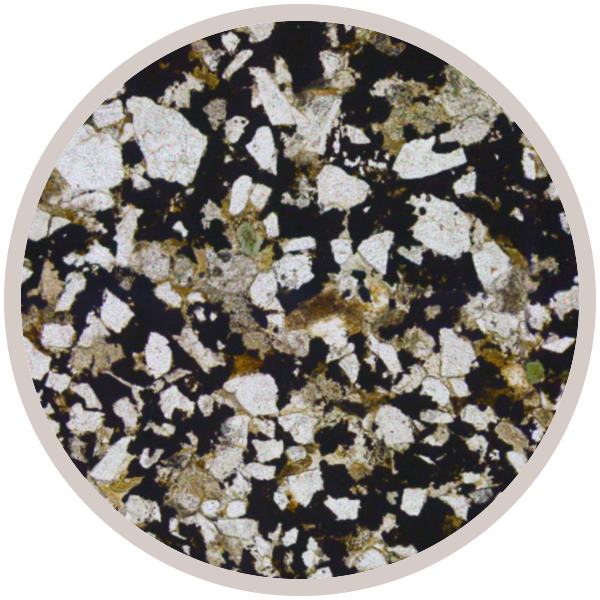
Fact sheet
A Carboniferous ironstone collected from Doulton's Claypit.
This ironstone was deposited in a low-lying, deltaic environment when the region lay near the equator. These deltas were thickly forested with trees whose fossil remains can be found in some of the strata. The ironstones form thin layers that represent palaeosols which experienced fluctuating groundwater conditions, alternately waterlogged and dry. This dynamic chemical environment led to the precipitation of insoluble iron minerals, notably siderite, in the pore spaces of the sandy soils.
In thin section, the first impression is of a dark rock studded with colourless grains of quartz and feldspar. There are vague hints of sedimentary lamination but otherwise no indication of bedding. Subrounded to subangular grains are mainly clear quartz and dusty feldspar, with a few polycrystalline lithic (rock) fragments and some greenish or brownish grains of altered mafic rock-types. There are a few laths of chlorite and mica.
However, the overwhelming feature of this thin section is the high proportion of opaque, or very dark, material filling most of the spaces between the detrital grains. This is the iron-rich material that gives the rock its name and made it a valuable ore for industry. It may be a mixture of iron oxides and possibly iron carbonate (siderite). Some patches show a dark red-brown colour typical of hematite. The iron-rich material forms a cement that binds the detrital grains tightly together. There is also a little pale brown or yellow interstitial material, likely a mixture of fine grained clays and insoluble iron oxides, with one or two small fibrous sheaves of pale green chlorite.
This sample was collected as part of the 'Macro to Micro' project.
This Collection showcases the geodiversity of a classic geological site: the Saltwells National Nature Reserve in the West Midlands.
As well as displaying thin section and hand specimen views along with information setting them in the context of their landscapes, we also include perspectives and creative responses to the geological heritage of the sites from the local community.
| Explore the stories of the rock layers at Saltwells and Wren's Nest NNRs, designed by students at King Edward VI School, Stourbridge: |
This Collection was made possible by funding awarded to the 'Macro to Micro' project by the Natural Environment Research Council (NERC) under their 'Growing Roots' scheme.
